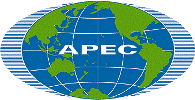APEC takes over most Asian country in Latin America
 Lima - For a Peruvian, an Asian face has few connotations of something foreign: it is frequently the face of a schoolmate, the corner shopkeeper or the neighbourhood buddy.
Lima - For a Peruvian, an Asian face has few connotations of something foreign: it is frequently the face of a schoolmate, the corner shopkeeper or the neighbourhood buddy.
This is the setting that is greeting delegates of the Asia-Pacific Economic Cooperation (APEC) forum in Lima, as they tackle their annual Leaders' Meeting this weekend.
And although there are representatives of other world regions among the 21 delegations at the summit, it is Asians - with economic powerhouses like Japan, China and South Korea - that play a key role in APEC.
Peru hosts Asians as special guests. Except for Brazil, it is the Latin American country with the largest community of Asian descent. But sociologists argue that Peru has proportionally felt the impact of its Asian community more than the regional giant because Asian aspects have become a key part of Peru's cultural make-up.
Everything started in the 1860s, when Chinese immigrants started to arrive in Peru in large numbers to work in farming estates. Thirty years later, it was the Japanese that started to arrive with similar goals: working, saving some money and returning home.
Asian labourers became crucial after the lack of manpower generated by the liberation of slaves of African origin.
Hired in very harsh conditions, many Asian immigrants opted never again to return to their faraway native countries and instead explored new options within Peru. New immigrants continued to arrive from Asia throughout the first half of the 20th century.
This is how the "nikkei" - of Japanese origin - and the "tusan" - of Chinese ancestry - communities emerged in Peru.
Other Peruvians called both groups just "chinos", or Chinese.
According to the Chinese Charitable Society in Lima, close to 12 per cent of Peru's 28 million people have some "tusan" ancestry.
More conservative estimates speak of some 600,000 Asian Peruvians, while some 500,000 - a community larger than the population of APEC- member Brunei, for example
- are identified as "tusans."
The great majority of Peruvians of Chinese origin come from a single province, Canton. A similar thing happens with the Japanese- Peruvian community, more than 70 per cent of whose members are from the Okinawa prefecture.
Surnames like Chang, Choy, Chu or Li are common in Peru, as are Yamashiro, Higa, Arakaki or Higuchi. Residents of Lima shop in Wong supermarkets, Hiraoka electrical appliance stores and Lay Chun stationers.
Gastronomy provides one of the best examples of fusion. "Chifa," the Peruvian version of Chinese food, is a national institution. There is no neighbourhood without chifa restaurants, and prices cover the whole range. The Peruvian-Japanese fusion cuisine, in turn, is equally tasty and praised, but markedly more elitist in prices.
There was even a Peruvian president of Japanese descent, Alberto Fujimori (1990-2000), who tendered his resignation from Japan and is currently in jail.
It is this Asian Peru that is concluding talks for a free-trade agreement with China and hopes for similar developments with Japan and South Korea.
As it hosts the APEC Leaders' Meeting, many delegates feel right at home. (dpa)